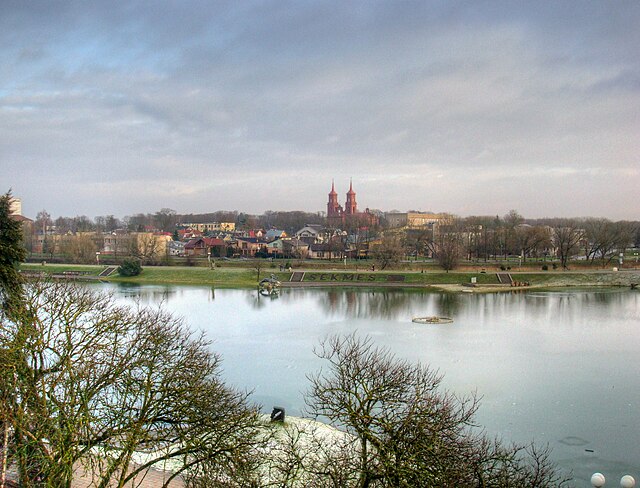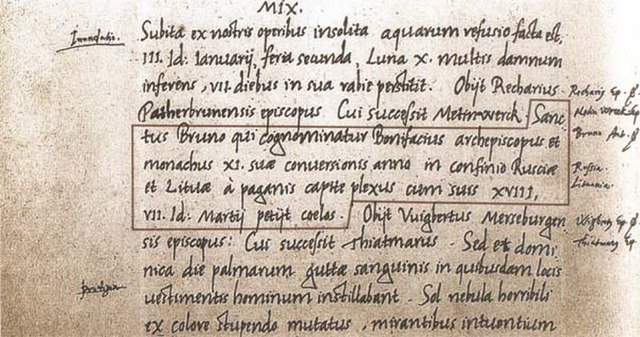Panevėžys is the fifth largest city in Lithuania and the eight most populous city in the Baltic States. As of 2021, it occupies 50 square kilometres (19 sq mi) with 89,000 inhabitants. As defined by Eurostat, the population of the Panevėžys functional urban area, that stretches beyond the city limits, is estimated at 127,471.
Image: Recreational area near Senvagė Pond and Nevėžis in Panevėžys
Image: BZN Sv Petro ir Povilo baznycia (two towers)
Image: View to Senvagė Pond and sculpture of Aleksandras Jogailaitis in Panevėžys, Lithuania
Image: Pnv 2 by Augustas Didzgalvis
Lithuania, officially the Republic of Lithuania, is a country in the Baltic region of Europe. It is one of three Baltic states and lies on the eastern shore of the Baltic Sea. It borders Latvia to the north, Belarus to the east and south, Poland to the south, and Russia to the southwest, with a maritime border with Sweden to the west. Lithuania covers an area of 65,300 km2 (25,200 sq mi), with a population of 2.86 million. Its capital and largest city is Vilnius; other major cities are Kaunas, Klaipėda, Šiauliai and Panevėžys. Lithuanians belong to the ethnolinguistic group of the Balts and speak Lithuanian, one of only a few living members of the Baltic branch of the Indo-European language family, which is also the most widely spoken language of the branch.
Lithuania's name in writing (Litua, on line 7), 1009
Baltic amber was once a valuable trade resource. It was transported from the region of modern-day Lithuania to the Roman Empire and Egypt through the Amber Road.
Trakai Island Castle, the former residence of the Grand Dukes and capital city of the medieval state
Battle of Grunwald and Vytautas the Great in the centre








